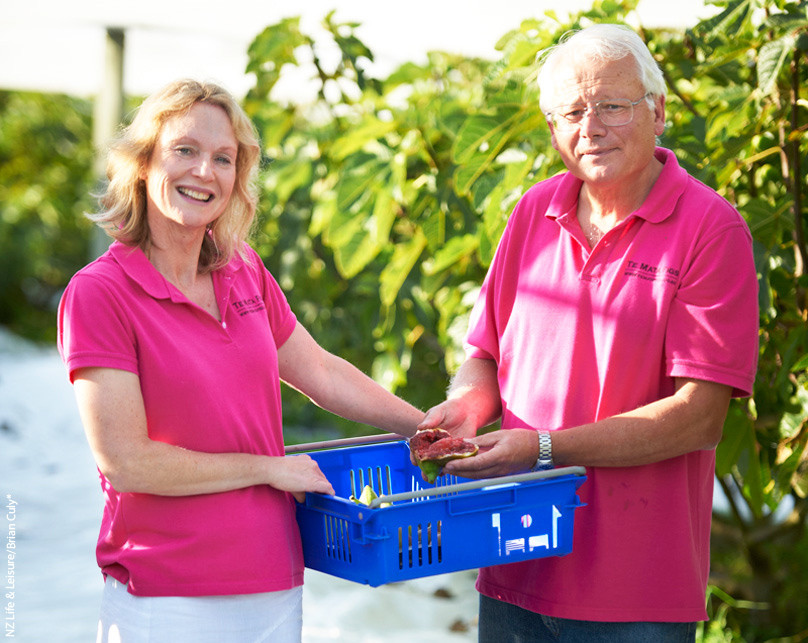Te Mata Figs
This summer’s drought was not a curse for all rural New Zealanders. Fig growers Helen Walker and Murray Douglas have rejoiced in a bountiful crop, ripened in the same warmth and dry that burned off nearby Hawkes Bay grazing land.
So good is this year’s crop quality that the couple expects around 70% to sell as chilled fresh fruit, with the balance going into their Te Mata Fig range of preserves, jams and rolls. “New Zealanders are just starting to have a love affair with figs,” says Helen Walker. “We hope they continue to really embrace them in both fresh and processed form.”
First items in the Te Mata Figs range began appearing in gourmet food stores a year ago. The business has now joined GS1 for the numbering and barcoding that will facilitate a stronger retail presence as and when processed product volumes build.
Helen and Murray started the business in 2008, initially with the purchase of two hectares of land on the fringe of Havelock North. The two Kiwis had quit corporate jobs in Australia to seek a better lifestyle on this side of the Tasman, ready to indulge a passion for the taste of figs (encountered first in Sydney). They have steadily planted fig trees in place of old nectarine and cherry orchards, and gathered in supply from other converts to the fig in Hawkes Bay and the Bay of Plenty.
“We started by experimenting with different varieties to see which would grow well and fruit best in this location,” says Helen. Most favoured so far are Brunoro Black and Adriatic, originating from the Mediterranean. Helen believes Te Mata Figs will have supply from around 3,500 trees in another two years, mostly from the trees of other growers keen to support her emerging brand.
The fig is, of course, an ancient fruit prized for its taste and nutritional value. (Technically, figs are actually groups of flowers growing together inside branches). Modern science has confirmed that they have the highest overall mineral content of all common fruits: They are especially rich in potassium, calcium, phosphorus and iron (and have no sodium, fat or cholesterol).
Te Mata Figs’ Just Fig Jam won a Cuisine magazine Artisan Award in 2012 in the jams and preserves category and Helen says the processed product range is constantly being developed. But she swears most by the fresh fig and the delights of its sweetness and texture when eaten as part of a summer salad or cheese board.
Fig trees are, she says, easy enough to grow in Hawkes Bay although the fruit must be handpicked and it is a delicate job at the right times between February and May. Some seasons, there are two crops off the same tree.
This summer may have brought a bumper harvest but not without some headaches caused by a late frost in November 2012 which caused most of the Breba crop to drop prematurely. Helen says climate fluctuation is certainly a risk in fig production, just as all agribusiness. “It is all part of being a grower. You just have to focus on your process and doing what you can to maximise the quality of your crop,” she says.

